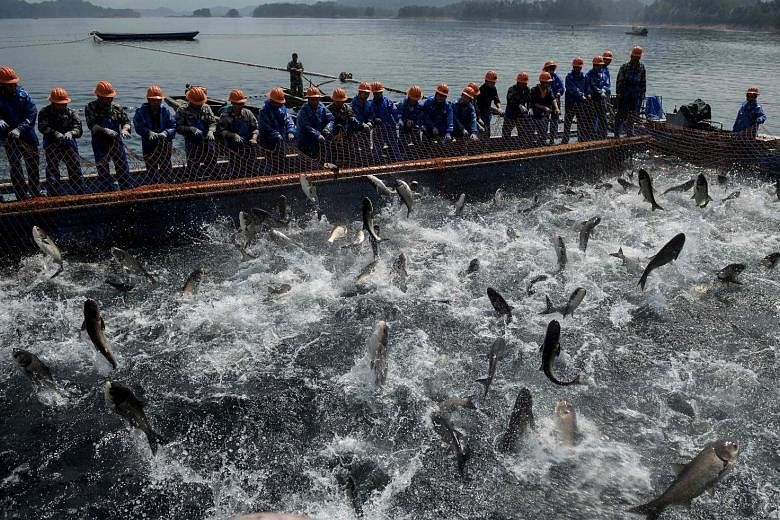QIANDAOHU • On a clear sunny morning in eastern China, the surface of Qiandao Lake boils with tens of thousands of thrashing carp as they are swept into the nets of fishermen like Ye Zhiqing.
So begins the spring fishing season for Mr Ye, who commands around 100 fishing vessels on the lake in Zhejiang province, a picturesque man-made freshwater reservoir whose name means "Thousand Island Lake" after its more than 1,000 wooded islets.
Covering an area nearly the size of Singapore and known for its clear waters, Qiandao Lake is a major aquaculture production centre for eastern China, and is notable for the unique methods of fishermen like Mr Ye.
Though their peak season begins now and runs through summer, Mr Ye and his crew live on the lake for 10 months of the year, waking early to scan the surface for telltale ripples. "We are like nomads on a prairie," Mr Ye said. "We go where the fish are."
Once the schools - silver carp and bighead carp, popular with diners - have been located in the maze-like lake, the boats deploy massive nets devised by Mr Ye, some up to several kilometres long.
Smaller boats dragging their own smaller nets then drive fish in the direction of the big boats, many vessels working as one.
"Catching them is the same as troops in battle. First, the scouts tell us where the enemy is, and then we start surrounding them and set up ambushes," said Mr Ye.
Eventually, as escape is cut off, thousands of penned-in carp boil up to the surface as the nets swoop up under them.
Mr Ye's methods have won government awards for their sustainability - they allow younger fish to evade capture, to be caught another day.
The carp also feed on algae, and maintaining a healthy balance of fish stocks is credited with keeping the lake's waters clear and preventing the algae "blooms" that plague many of China's polluted freshwater systems.
Mr Ye comes from a family of farmers, but their livelihoods changed when the lake was created in 1960, part of a hydroelectric dam project. It displaced hundreds of thousands of people and submerged a 2,000-year-old ancient city that is still reachable by submersible.
Today, lake-related tourism and fishing are the main income-generators but Mr Ye said it is increasingly difficult to find employees for the tough work of fishing: "We are kids from villages and had a lot of hardships growing up. But today, kids can't endure this hardship any more."
AGENCE FRANCE-PRESSE

